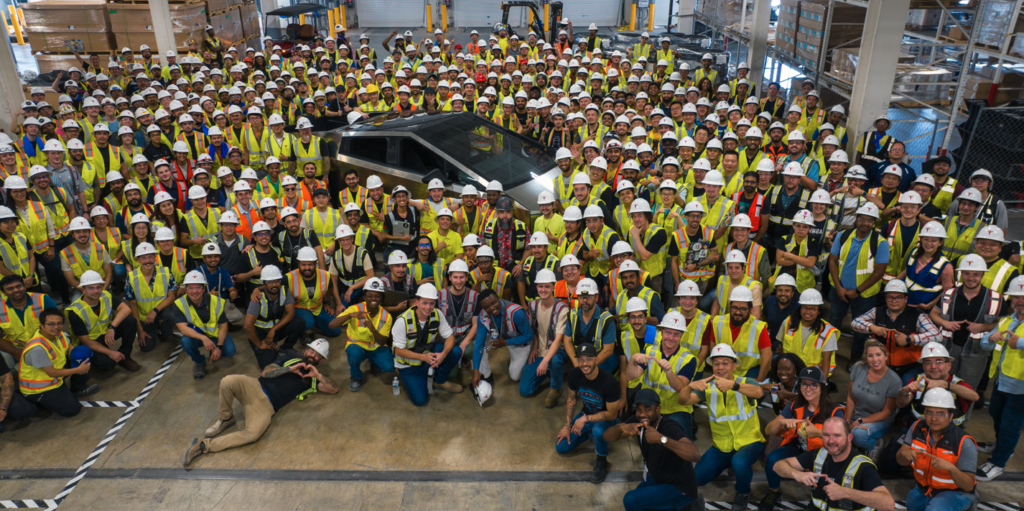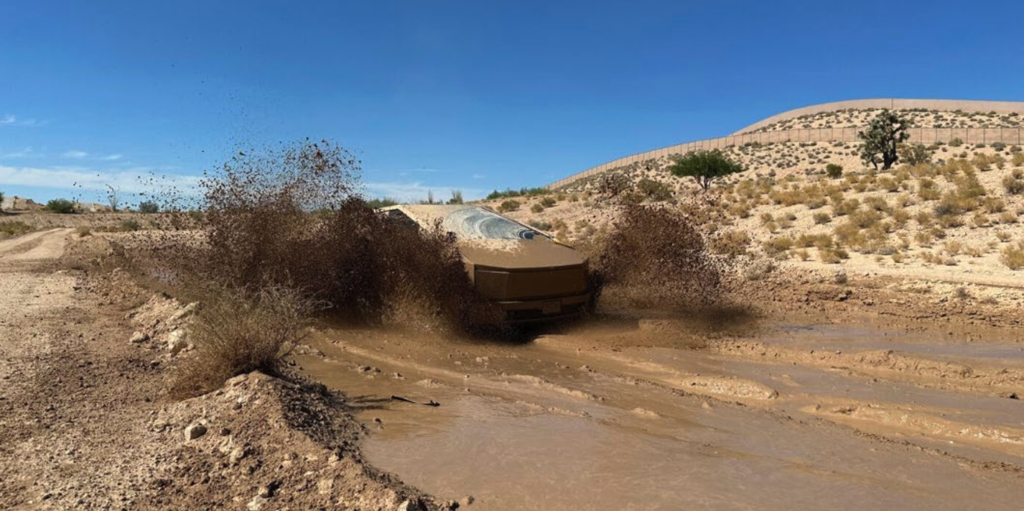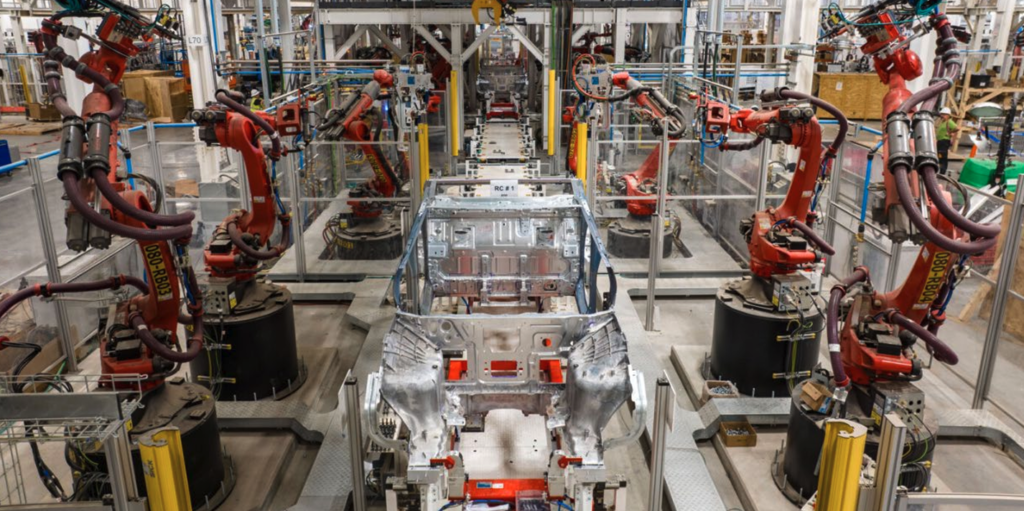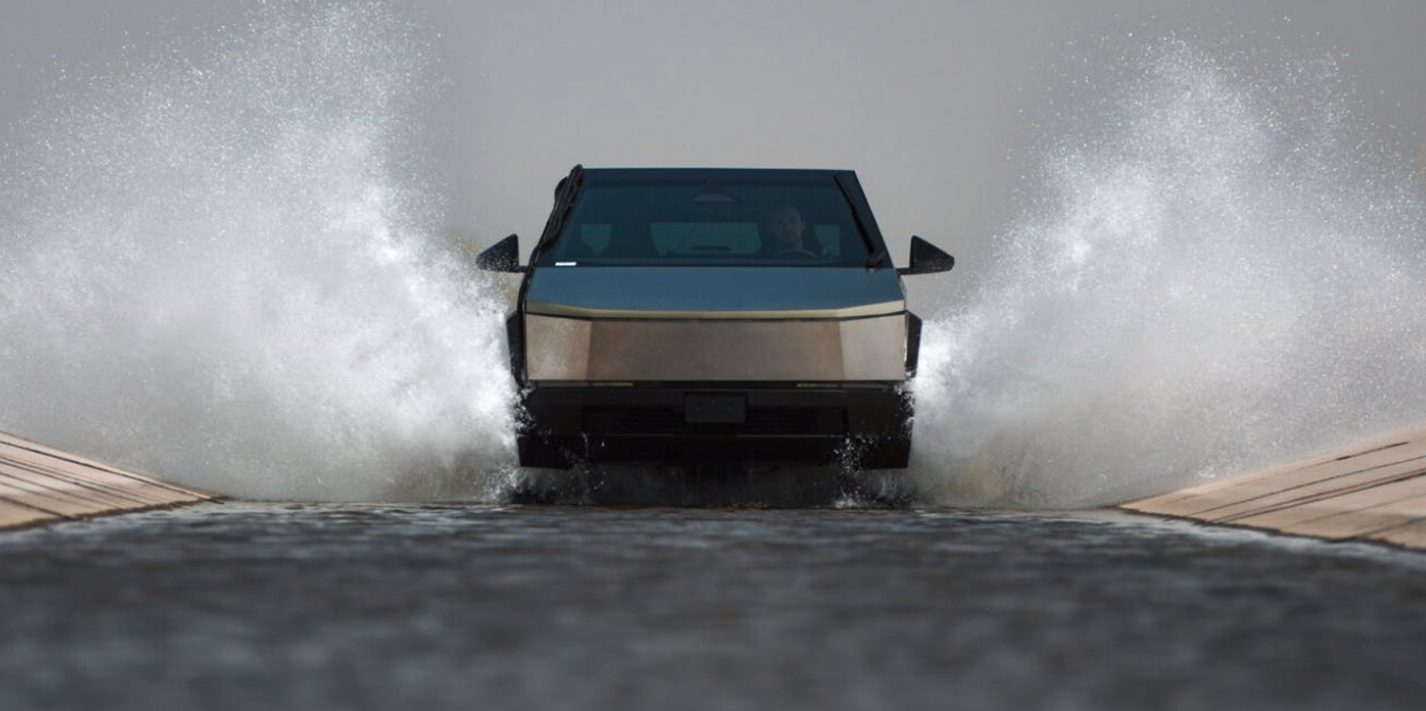The Tesla Cybertruck is on track for mainstream production late in 2023 as the electric car maker’s outspoken CEO claims demand is “off the hook”.
But the radical electric ute’s complex development – which includes advanced software, a new electrical system and punishing mud baths and cold weather testing in New Zealand – is taking a chunk out of the EV brand’s profits; the company says operating expenses increased in Q2 in part due to the Cybertruck.
That said, Tesla remains the gold standard for profitability following the release of its quarter two 2023 results, which showed record revenues of US$24.927 billion.
READ MORE: Elon Musk says Tesla Model 3, Model Y could get even more affordable
READ MORE: Tesla Model Y now cheaper than ever
READ MORE: Tesla Model Y outsells Ford Ranger to become Australia’s second best-selling vehicle
While the profit margin dropped from 19.3 percent to 18.2 percent (US$4.5 billion), it’s still an extremely healthy number for a car company, translating to something like US$9500 profit per vehicle sold.

Considering most traditional car makers are still bleeding money on electric cars – and increasing the prices of their internal combustion engine models – it’s a result that will no doubt lead to more head-scratching in rival boardrooms.
Along with comments by Tesla CEO Elon Musk the healthy – but dropping – margins gives some insight into the brand’s thinking about keeping sales growth strong even if it comes at the expense of profits.
“When interest rates rise dramatically we actually have to reduce the price of the car because the interest payments increase the price of the car,” Musk told media on an earnings call.
In short, there’s so much fat in a Tesla that the company can slash prices – as it has done this year – to keep demand strong.
But it’s the Cybertruck that promises the next big kick for the electric car brand.
The company is in the final phases of development, which includes putting the futuristic four-door through its paces in punishing off-road environments. Tesla released two images of the Cybertruck undergoing dirt road testing, which comes off the back of recent spy images of the cars testing in sub-zero temperatures in New Zealand.
“We are now testing Cybertruck vehicles around the world for final certification and validation,” the company said in its investor presentation. “This might be the most unique vehicle product in decades; with that comes trialing and testing new technologies.”

The all-electric ute has started production of “release candidate” build vehicles at the factory in Texas. They’re early near-production-ready examples that are an important part of ramping up for mass production.
The company says the Cybertruck “remains on track for initial deliveries this year”, although they’re likely to be relatively small volumes.
Not that there’s a problem with demand, according to CEO Elon Musk.
“Demand [for the Cybertruck] is so far off the hook you can’t even see the hook,” he said, while adding the production complexities would likely limit how many can be manufactured early on.
As well as an exoskeleton – whereby the structure of the car is on the outside, rather than beneath panels – the Cybertruck will get a 48-Volt electrical system and the company’s most advanced software to date.
“The Cybertruck has a lot of new technology in it – like a lot,” added Musk, something likely to make it slow going early on.
“At the end of the end of the production ramp [up] we’ll move as fast as the slowest and least likely elements of the entire supply chain.”
He predicted 2024 would be when the Cybertruck moves into more serious volume production.

“I think we’ll be making them in high volume next year and we will be delivering the car this year,” said Musk.
Tesla also claims the Cybertruck will be the first US pick-up truck with four doors and a six-foot-plus (183cm) load tray length that is less than 19 feet (5.79 metres) long, allowing it to fit in a standard garage.
Of course, there are still question marks about whether the Cybertruck would even make it to Australia.
The company has stopped taking orders on its Australian website and has not confirmed whether the car will be manufactured in right-hand drive.
One thing certain to make it Down Under is the next generation architecture that will underpin future Tesla models.
The company says “we continue to make progress on our next generation platform”, which is a platform set to underpin multiple models, including a yet-to-be-revealed more affordable Tesla.










